Week 9 Sprint 4 | 500 word Blogpost
I have created and licenced an Open Toolkit for Artistic Learning. I’d like to organise a public event within which to present and run this Open Toolkit that will attract like-minded peers. I’ve heard that “unconferences” are ways of organising such participatory events, but I’m not sure what unconferences are, or how to find out about them. It all seems so daunting. Where should I start?
After the first two barcamp course trainings and tutor exchanges, I’ve pretty much settled on my unconference-based open learning art toolkit. And for participants on how to proceed, here is my barcamp user manual.
Before conducting a barcamp participants should refer to the series of questions given by the organisers and think first, e.g. If a computer as an autonomous conscious being.
1. Do you think a computer can tell when a human is happy or sad? Would a computer be angry if you gave it the finger?
2. what do you think the computer’s aesthetic view of human beings is?
3. do you think we might be tools in the eyes of computers? If so, what kind of tools are we to them? What kind of needs can we satisfy?
4. do you think it is a violation for the computer to look at us every day? Should it close its eyes at the right time? The opposite is true.
This transpersonal approach is inspired by my experience at Calton Hill, which can be found on my THEME course blog:https://blogs.ed.ac.uk/s2339972_themes-in-contemporary-art-2022-2023sem1/2022/11/04/reflective-analysis-beyond-vision/
There is an interesting topic on the aesthetics of computers called photo aesthetic. Critically speaking, is it possible to have a computer do the aesthetics of a picture or not? After all, aesthetics is a very subjective matter, and the definition of beauty itself is not clear, so it seems unrealistic to ask a computer, which needs explicit instructions, to do something that is not even clear to humans.
In terms of data, here is a reference that gives some idea of the underlying theory of photo aesthetic – RAPID: Rating Pictorial Aesthetics using Deep Learning https://dl.acm.org/doi/abs/10.1145/2647868.2654927
This is probably one of the first papers to use deep learning for aesthetic scoring. In image aesthetics, both the overall layout (global) and the details (local) of an image are taken into account. In order for the network to capture both, this paper takes the whole image (global) and feeds it into the network, but also randomly picks out a number of patches from the image (local) and then combines the information from both for classification.
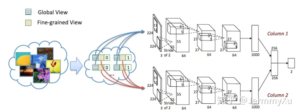
But for me, I would prefer to put myself in the role of a computer in order to make autonomous judgements about beauty (although we can’t be computers, we are humans), to use the eyes of a computer to make judgements and to think, which is what I am doing with this barcamp. Although this is not very rigorous in academic and scientific terms, the aim is to raise awareness of the need to think differently, to reduce the deep-rooted anthropocentrism and to achieve equality and respect.
For the barcamp, participants only need to bring an Apple electronic device capable of airdrop data transfer. Participants can create their own self-portrait through the computer’s eye (I like this because I can use it as a social media avatar), and if they are in motion, they can record themselves swinging their bodies, drinking water or whatever they do most often in front of their computers, which I will send to them via airdrop.
And at the end, we can simply organise a workshop or Q&A where we can answer and reflect on the previous questions, just a very simple informal exchange, don’t be nervous.
Sprint 3 update
Based on the previous barcamp programme, I had a new idea.
Firstly, in my concept, I wanted to keep the idea of a ‘seminar’ – without defining each participant. The initial idea was to refer to the Socratic Seminar, where an image of an artwork or installation or the text of an exhibition is posted online for the audience to discuss and rewrite, so that the text can be reinterpreted from a different perspective. However, due to various factors I was unable to realise the success of my project, for example: I only had 20 minutes to present in the final barcamp and 20 minutes was clearly not enough for the workshop, and although I intended to set up an online creative arts community on social media platforms and private websites, it was clear that I could not guarantee that the participants would still have a great deal of interest or time to participate after the workshop. As the literature – Chapter 4: How to Plan and Execute a Successful Camp in Boule, M. (2011) Mob rule learning camps, unconferences, and trashing Medford, N.J: CyberAge Books. that people usually exchange more creative and daring ideas in informal settings such as cocktail parties, and although they exchange business cards at the end of the party, they don’t connect afterwards.
So I wanted to make a real installation and have the audience experience it themselves rather than just show them pictures and videos, so that it would be more experiential and entertaining for the audience and thus put them in a relaxed state, which I believe would stimulate their creativity more, as the Socratic Seminar is relatively serious and may have a high threshold for participants. The workshop, on the other hand, takes place after the audience has participated, allowing the audience to think from me about what ideas they had during the experience of the installation, or whether they agreed or disagreed with the questions I provided, and on what basis?
While thinking about how to make the installation at the computer, I suddenly noticed my computer camera and couldn’t help but think, the computer is a tool for me to learn and live, but what am I to the computer? The computer is watching me every day, watching me learn and live, so what am I to the computer? What do I look like in the computer’s vision of me?
So I wanted to do a programming to encode and pixelate the footage recorded by the computer camera and use it to explore about what we look like in the eyes of the mechanical data.
The programme is as follows
0-10 (15) minutes: Participants can simulate working, drinking, taking selfies or shaking their bodies, etc. in front of the computer equipment and the camera will record their video patterns and create some pixelated or colour block patterns or videos which I will then transmit to the participants.
As this barcamp is intended for a large number of participants at that time, I think this recording process will be quick and effective and I will use two devices, one for recording and one for transmission, so that I can serve at least 10 people in 10-15 minutes.
For 10 (15) to 20 minutes, the participants discuss together their ideas about the installation. For example (there could be more).
Do you think a computer can tell the difference between a person’s happiness and sadness?
Do you think we might only be tools in the eyes of a computer?
Do you think that a computer looking at us every day would be a violation of our rights? Should it close its eyes at the right time?
What do you think the computer’s aesthetic view of people is?
Sprint 3
I was asked to research, design, run and record an ‘open’ workshop to teach an aspect of my practice to a group of peers. I’m not sure what an ‘exercise’ is, or if I even have one! How can I figure this out? I’m also not sure what ‘teaching’ in ‘open’ might involve. If I have an exercise, how do I support others to learn it in an open way?
I think that the discussion of artistic values and critical thinking is an essential part of the development of contemporary art, and that the public today may not lack a definition of the ‘external beauty’ of a work of art, but I think that the knowledge of the values and cultural context behind a work of art is very much lacking, so I think my “I would like it to be more like a seminar, where a text, a story or a work of art is used to lead the participants to discuss and create different inspirations and values.
So how do I figure out this ‘open’ workshop? In my quest to practice critical thinking methods, I found a particularly interesting approach – the Socratic Seminar. This workshop was initially used for differentiated teaching in schools, but I thought it was a particularly good way to draw on it to support my ‘exercise’, and it worked well both online and offline.

For example.
1. choosing a text: we can use as a source text a deeply valuable work of art, a controversial art theory or a literary work with an open ending.
2.Prepare participants: While participants should read carefully and be prepared for each session, it is usually best to tell students in advance when they will be participating in a Socratic seminar (we can post this part in advance through our website or social media platforms). As the workshop requires participants to continue to focus on the text, we can distribute post-it notes for students to use to annotate the text as they read.
3. Prepare questions: While participants may ultimately be responsible for moderating the entire session, the facilitator usually takes on the role of discussion leader when participants workshop and ask questions. Ask as many open-ended questions as possible, targeting those whose value lies in exploration rather than answers.
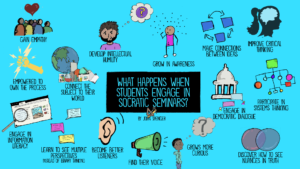
4.Establishing participant expectations: Because participant inquiry and reflection are central to the philosophy of the Socratic Seminar, the inclusion of participants as a whole in the establishment of seminar norms is a real initiative. Begin by asking participants to distinguish between behaviours that characterise debate (persuasion, prepared rebuttals, clear positions) and behaviours that characterise discussion (enquiry, responses that emerge from the ideas of others, community spirit). Hold participants accountable for the norms they agree to. I believe that in an open educational process this is a must for every participant, so the facilitator can guide as appropriate.
5.Establish the role of the facilitator: While the facilitator can take the lead by identifying which open-ended questions students will explore (at the outset), the facilitator should not see himself or herself as a key participant in the pursuit of these questions. You may find it useful to limit your distractions to useful reminders about the process (e.g., “Maybe this is a good time to shift attention back to the text?” “Are we ready to explore different aspects of the text?”) . Resist the urge to correct or redirect, relying instead on other participants to respectfully challenge peer interpretations or offer different perspectives.

6.Assessing effectiveness: Socratic workshops require assessments that respect the central nature of participant-centred inquiry to success. The most comprehensive measure of success is reflection by facilitators and participants on the extent to which text-centred participant talk dominates class time and work. Reflective writing that asks participants to describe their participation and set their own goals for future workshops is also effective. It is important to understand that, like the workshop itself, the process of acquiring the ability to explore the text at any given point is more important than ‘getting it right’. Of course the resulting text could be posted later in the online creative community, which would be a very meaningful continuation of the original text.
So I think that the focus of OER ‘exercises’ is not on teaching, and that art sites like Education or Art for All are already saturated, and that the bottleneck of OER today is, I think, how to get participants to discuss and thus generate new and interesting knowledge and values that will be more attractive than mere education.
Links to my peer reviews
Sprint 2: Portfolio: Reflective Analysis (end of Sprint)
Art Assignments & Learning Theories –Artistic assignments and reflective analysis
美术作业名称:Never Seen, Never Will
网址:https://www.theartassignment.com/assignments/never-seen-never-will
我的回复:https://www.instagram.com/p/CjaW_4QtHbr/ ?igshid=MjU0Y2ZlMmY=
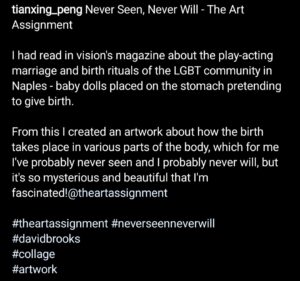


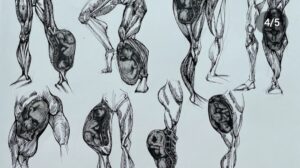
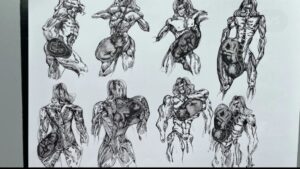
- 从 建构主义的角度来看,您如何看待您在这项 艺术作业 中的经历 ?
- 从 联结主义的角度,你如何看待你在这项 艺术作业中的经历 ?
在完成艺术任务的过程中,对于任务本身,我发现了观念文化与那不勒斯特定人群的文化之间的联系和共同点,这让我对未知与未知之间的联系有了一些想法已知的概念,在响应平台我选择在 Instagram 上发布。我对这个项目有很多局限和不足,例如,为什么两个概念之间的联系媒介只能通过毛笔和纸?物质设备是否比笔和纸更好、更直观地表达了概念?我如何在 Instagram 上编辑我对作业的回复,以使其更吸引在线艺术家和学者社区与我进行艺术讨论?
- 从 批判教育学的角度来看,您如何看待您在这项 艺术作业中的经历 ?
在这件作品中,我充分考虑了生育和受孕的未来,但我还没有想过它的含义,比如实现这样一个物理结构会带来什么样的社会变化?对人权、世界观和价值观有何影响?这是正面影响还是负面影响?
我认为这种艺术作品非常适合启用或促进 Paragogy,首先因为它在社区中发布的方式可以让各行各业的学者轻松进行艺术讨论和头脑风暴,其次因为完全自主的艺术创作环境更好激发创作者的创造力,打开他们的思路,更容易把握两者之间的联系。
sprint 1
During the first day of the red group meeting we explored some of the supports and taboos in the rules of cooperation. Firstly, the following chart shows some of my thoughts.
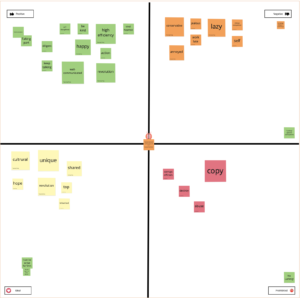
For the team rules I think the main thing is revolution, innovation and critical spirit, on top of that respect history and culture is also very important, for jealousy and lazy is what I do not tolerate. (It’s not copy, it’s plagiarism in the negative section.) I think sharing is also very important, only when peer workers communicate deeply with each other can they uncover the inner workings of the project and can successfully carry it through to the end, and compromise is also a must when communicating, too much blind ego can lead to a breakdown of the group discussion and affect the progress and quality of the project.
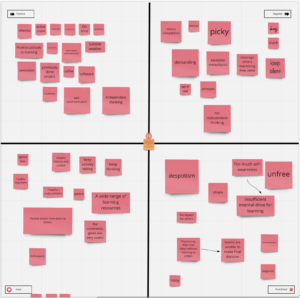
Interrupting others expressing their views and disrespect for others is not to be tolerated. At any stage of group discussion and reflection we need to listen to the suggestions and ideas of others, and if we have different perceptions we need to point them out in a reasoned manner rather than just dismissing them.

In the make gold workshop I presented the idea that building on a spiritual level is the real gold, which led to a brainstorming session and the final outcome.

Welcome!
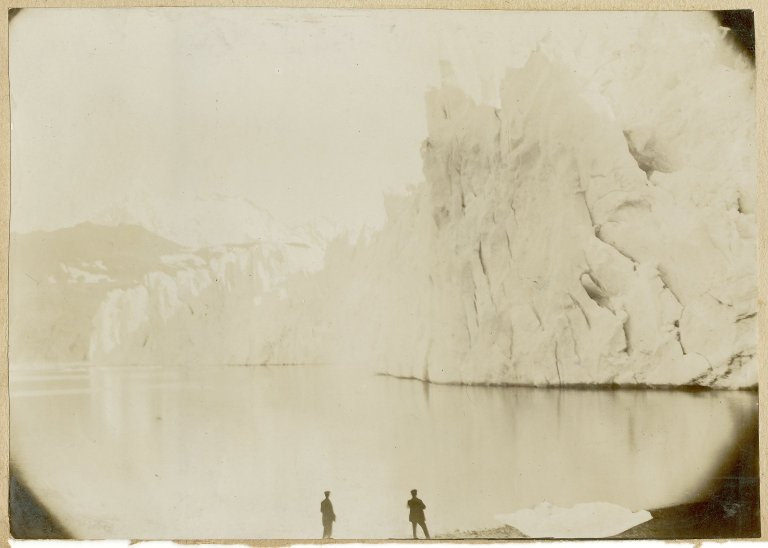
Welcome to your new blog site!
This is your first post. You can edit this or delete it and start blogging.
You should read the Terms of Use if you haven’t already.
For help and advice on getting started with a WordPress blog, see the Academic Blogging help pages.
Your blog is private by default
You can open your blog up to as many or as few people as you like in Dashboard > Settings > Reading > Site Visibility:
- You can open your blog up to specific University members by adding them as users to your blog.
- You can open your blog up to all University members who have an EASE login.
- You can make you blog open to the world.
The featured image on this post comes from the University Collections. If you want to use more images in your blog posts, or perhaps use your own choice of image in your blog header, you can:
- Browse a selection of images on Flickr from the Collections that are available for you to use on open licenses.
- Search the full online image collections.
- Find more information about searching for and using openly licensed images on the Open.ed site.